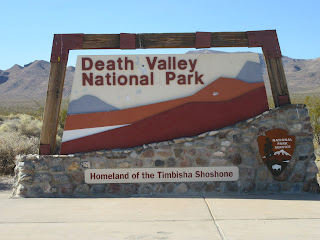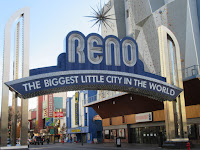
Hoover Dam, originally Boulder Dam, was constructed between 1931 and 1935. Thousands of depression-era workers found jobs there. Many lost their lives.
This large concrete, arch-gravity dam is located in the Black Canyon of the Colorado River, between Nevada and Arizona. Powerful generators use water flow to produce electricity. Lake Mead formed as a result of the dam. It is one of the largest reservoirs in the US, supplying water to western states, and providing a water-sports recreation area.
When we last visited 30+ years ago, the top of the dam was highway 93 across the river. We stopped there to look at the dam over the edge of the railing...Now the landscape around the dam has changed.
A new bridge completed in 2010 crosses the river downstream from the dam; viewing platforms, walkways, and observation areas line the top of the dam. Multiple parking areas are connected to the walkways. Tours are available.
















































